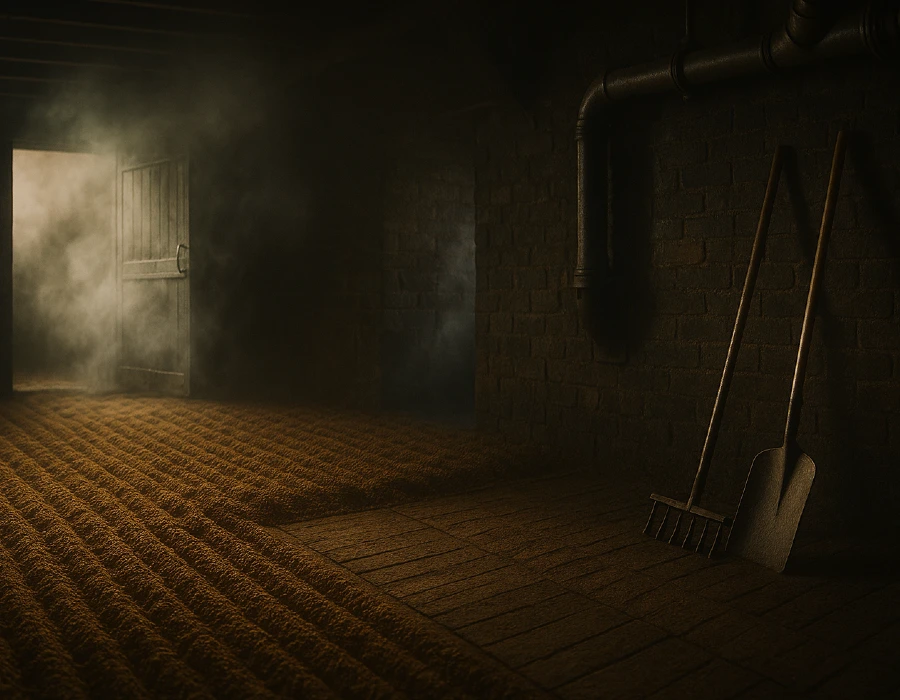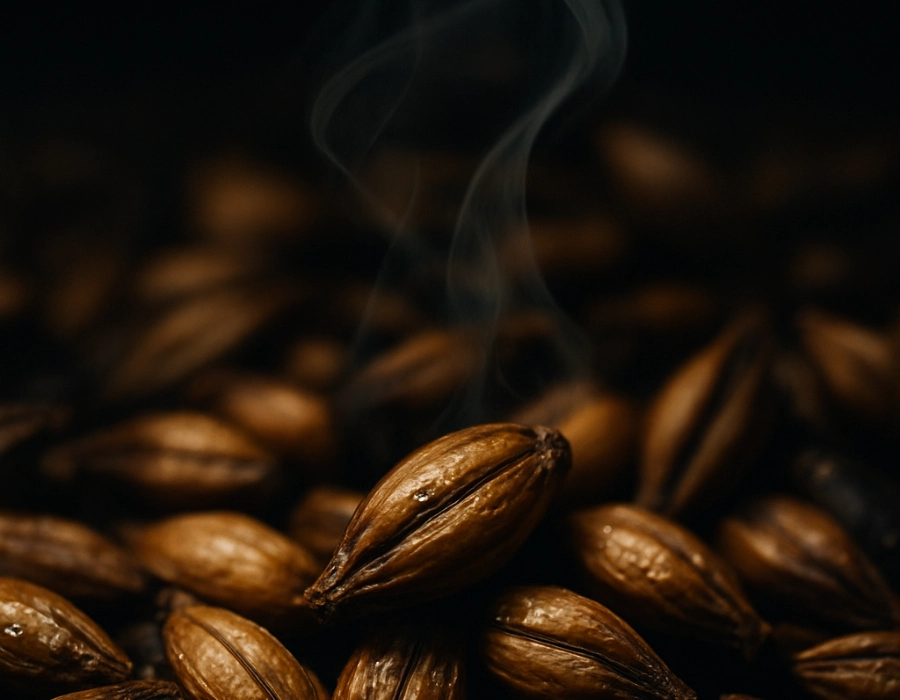Scotch speaks two dialects: peat and sweet. One leans into smoke, sea spray, and campfire ash. The other glows with honey, vanilla, and dried fruit from patient time in oak. This guide breaks down where those flavors come from, how peat levels shape aroma and taste, and why cask choices can push a dram toward bonfire grit or dessert-like richness. At Hush and Whisper, we love both sides of the glass, so we’ll show you how to spot the signals in the nose, the palate, and the finish, then match each style with the cocktails and sipping moments that make it shine.
Related Article: What Song Matches What Whiskey Drink and Mood
Peat vs Sweet at a Glance
Scotch speaks two languages. One is smoky and coastal. The other is round, fruity, and softly sweet. Think of this section as peat vs sweet: understanding Scotch whisky flavors in one quick snapshot for curious whisky drinkers.
- Peated whisky leans into peat smoke, seaweed, iodine, and campfire.
- Sweeter styles show honey, vanilla, apples, dried fruit, and gentle spice from time in oak.
- Preferences vary depending on mood, food, and season, so keep an open glass.
With this contrast in mind, the rest of the guide will feel simple and intuitive.
What Peat Is and Why It Adds Smoke
Peat forms in cool, wet bogs as layers of moss, roots, and heather compact over centuries. In traditional malt houses, peat is burned as fuel beneath the drying floor, and its aromatic compounds rise with the heat to season the grain.
- The smoke carries phenolic compounds that cling to damp barley.
- Source regions in Scotland matter. Different peatlands infuse different aromas.
- The result can be smoky, rich, and coastal or more earthy and herbal.
This is where the story of smoke begins, long before spirit meets the cask.
The Malting Process in Plain Terms
Flavor starts with grain. The malting process unfolds in three steps that shape body, aroma, and fermentable sugars.
- Steeping soaks raw barley to wake enzymes.
- Germination begins, and starches start converting.
- The kiln dries the green malt to stop growth and lock in characteristics.
Handled with care, these steps set up texture, fruit, and subtle cereal notes in the final whisky.
A short transition keeps us on track for the next step in whisky production.
Peated Barley and Phenol Parts (PPM)
When peat is used during kilning, you get peated barley. Distillers track intensity using phenol parts per million, commonly called PPM.
- Low PPM reads as subtle smoke on the nose and palate.
- Mid PPM feels balanced, with peat and fruit in conversation.
- High PPM lands as boldly peaty, sometimes tarry, briny, or iodine-tinged.
PPM is a guide, not a guarantee. Still shapes, fermentation, and casks can nudge what you taste.
That context helps you read labels and tasting notes with confidence.
From Mash to New Make: A Quick Whisky Production Map
Every stage of whisky production adjusts aroma and texture.
- Milling and mashing unlock sugars in the malt.
- Yeast converts sugars to alcohol, producing congeners that add complexity.
- Copper stills refine the new make. Cut points decide what is kept for spirit character.
These choices steer a spirit toward lighter florals or bolder, rich profiles before wood enters the picture.
Knowing this map explains why two peated whiskies can taste very different.
Single Malt, Blends, and House Style
Single malt means malted barley only, made at one distillery in Scotland. Blends combine malt and grain whiskies from multiple distilleries to create a smooth, consistent blend.
- Single malt often highlights place, process, and distinct subtleties.
- Blends are crafted for balance, approachability, and a diverse range of occasions.
- Both categories can be aged in varied barrels that change tone and sweetness.
Labels are a starting point. Let your taste and context guide the pour.
This foundation simplifies what you will read on shelves and menus.
Regions That Shape Flavor: Islay, Speyside, Orkney
Regions can hint at what is in the glass, although style is never absolute.
- Islay: Often predominantly peaty with shoreline notes, seaweed, and iodine.
- Speyside: Generally sweeter, with orchard fruit like apples, honey, and vanilla.
- Orkney: A gentle, heathered smoke that reads elegant and balanced.
Regional cues help you verify expectations before you buy.
Distillery Signatures: Laphroaig and Highland Park
Laphroaig is a classic Islay for briny, medicinal smoke with a firm peat core.
Highland Park on Orkney shows honeyed malt, heather smoke, and polished balance.
House style matters, but small choices in each season keep things alive and interesting.
These examples show how place and process connect in the glass.
Cask Influence: Ex-Bourbon vs European Oak
Wood pushes Scotch toward gentle sweetness or deeper spice.
- Ex-bourbon barrels highlight vanilla, coconut, and clean citrus.
- European oak often brings dried fruit, clove, and a touch of resin.
- Secondary finishes can add dessert tones or dried-nut depth.
Cask choices can make a peaty spirit feel friendlier or dial up dessert energy.
With wood in mind, you can predict where a bottle will land on the peat-to-sweet line.
Tasting Guide: Nose, Palate, Finish
Use this simple map to get more from every sip.
- Nose: Fruit, smoky flavor, cereal, oak, coastal hints.
- Palate: Balance of peat, fruit, sweetness, spice, and texture.
- Finish: Length, warmth, and where the last flavor settles.
A quick mental review after each step helps you remember what you liked.
These notes make your next selection faster and more satisfying.
Pairing Ideas and Serving Tips
Pairing and service can dial whisky toward harmony.
- For peaty drams, try smoked salmon, blue cheese, or dark chocolate.
- For sweeter profiles, lean into roasted nuts, apple tart, or mild cheese.
- A few drops of water can open phenols and fruit. A large cube chills without washing out alcohol.
Small moves like glassware and water can bring out hidden subtleties.
These quick tweaks help each style find its best moment.
How to Choose Your Next Dram
Start with what you want to feel, then match the bottle.
- Seeking bold and coastal. Look for peat, higher PPM, or Islay clues.
- Craving gentle fruit. Aim for Speyside, ex-bourbon casks, or a smoother blend.
- Want balance. Consider Orkney expressions that keep smoke and honey in connection.
When you read labels, watch for cues like peated barley, PPM, and cask type. If product notes mention coal, coke, or peat-fired kiln, expect some level of smoke. If they highlight European oak, sherry, or dessert descriptors, expect a rounder, richer profile.
A short closing thought keeps the journey grounded and practical.
Hush and Whisper White Whiskey and Rye: A Quick Tie-In
Use the same peat-to-sweet map from this Scotch guide to place our house spirits.
White Whiskey
Bright, grain-forward, and oak-free, so it sits closer to the sweet side without tasting sugary.
- Grain bill: 70% corn, 16% wheat, 14% malted barley
- Profile: clean corn warmth, soft cereal, light vanilla from the malt
- Analogy to Scotch: think of new-make spirit before the cask adds honey, fruit, and spice
A neat pour lets whisky drinkers taste the base that oak would later shape.
Rye Whiskey
Spice-driven and lively, reading bold rather than peaty.
- Grain bill: 95% rye, 5% malted barley
- Profile: pepper, baking spice, dried citrus, firm mid-palate
- Analogy to Scotch: more like a robust Highland or Orkney dram finished in active oak, where spice leads and smoke stays minimal
Try it side by side with a sweeter Speyside to feel how spice contrasts with fruit.
Stop by the distillery for a Hush and Whisper Whiskey tasting. It is an easy way to connect the Scotch spectrum with what we make in-house.
A Final Sip from the Bar
Peat or sweet is not a contest. It is a spectrum that lets drinkers move with mood and season. From a barely there wisp of smoke to a rich, honeyed finish, notice how your senses respond as fruit, oak, and phenols shift in the glass.
Join us for a tasting experience at Hush and Whisper. Our team will guide you through smoky and sweeter profiles, talk peat smoke, casks, and serving tips, and help you choose the drink that fits the moment. Book your tasting, complete your own peat-to-sweet map with us, and discover how Scotch flavor lives in the nose, the palate, and the finish.









